Japan
There are lots of web-sites with useful detailed information for planning a trip to Japan (e.g. japan-guide.com, Inside Kyoto, Inside Osaka and The Man in Seat 61 for train travel). These notes, based on our experiences, are specific things that we would have found it useful to know in advance.
Context
We spent 14 days in Japan in September 2019:
- 4.5 days in Tokyo
- 3.5 in Kyoto,
- 1 in Nara,
- 1 travelling from Kyoto to Hiroshima via Himeji,
- 1 in Hiroshima/Miyajima,
- 1 travelling from Miyajima to Osaka, via Rabbit island
- 1 in Osaka
Logistics
Rail pass
The standard wisdom is that the Japan Rail Pass is a must-buy. This is undoubtedly true for a 7 day Tokyo-Kyoto-Tokyo trip, however wasn't the case for our trip. We did however save a lot of money by buying a 5 day Japan Rail (JR) Kansai-Hiroshima pass We used this to travel Kyoto-Nara-Kyoto-Himeji-Hiroshima-Mijajima-Takanoumi (for Rabbit island)-Osaka. It covered unreserved seats on all JR trains, including the fastest (Nozomi) shinkansen trains. Local trains were sometimes standing room only, but we didn't have problems finding seats on shinkansen trains.
There are lots of different passes covering various areas. HyperDia is probably the best search engine for timetable information.
Luggage storage
Hotels will happily store luggage pre and post check-out. While visiting sites between overnight stays we used station luggage lockers. Major stations have lots of luggage lockers, often in multiple locations around the station, both inside and outside the ticket barriers. Our smallish suitcase and medium holdall fitted in a single large locker.
The one place we had difficulty finding an empty locker was Hiroshima. After joining the masses in an empty luggage locker scavenger hunt around the station (and the adjacent department store) we eventually found some on the platform from which the trains to the ferry port (Miyajima-guchi) depart. There were a moderate number of lockers at the ferry port on Miyajima (and when we got home we discovered an email from our hotel offering to collect our luggage from the ferry port on our arrival). We expected to have problems at Himeji, but in fact there were plenty empty when we arrived at ~9.30am.
ATMs
Japanese ATMs don't take international cards. However (in the major cities we visited) convenience stores (Family Mart as well as 7Eleven) which have machines that take international cards were really common, so this wasn't a problem at all. There was also an international ATM in baggage reclaim at Tokyo.
SIMs/cards wifi
Many web-sites recommend buying a data-only SIM or a mobile router. We mostly managed fine without doing this, by using wi-fi networks at hotels, on trains and in public and screen-shoting useful information (e.g. train timetables). Public networks were sometimes unusably slow. There was one occasion (in the midst of the aforementioned luggage locker scavenger hunt) when web-access would have been useful but we couldn't get it (and I ran up a £20 data download from our UK phone network trying, and failing, to buy one of their data passes).
Vegetarian food
I'd describe myself as a pragmatic vegetarian. I don't ever (apart from the time it took me several sleep-deprived mouthfuls to realise my portobello burger wasn't made of soy…) eat meat. At home I don't eat food containing meat products (e.g. gelatine, meat stock, finings). On holiday I will if there's no reasonable alternative. In Japan I didn't eat miso soup, but on a couple of occasions ate noodles which had probably been cooked in meat stock.
Finding food I could eat was challenging at times, but not as bad as I was expecting. Kyoto isn't the vegetarian paradise which is sometimes claimed. There are some decent restaurants which are entirely, or partly, vegetarian. But the vast majority of places don't serve anything vegetarian. Even dishes which superficially appear to be vegetarian (e.g. vegetable fried rice) contain lots of tiny pieces of meat/fish. Saying 'no meat, no fish' was more effective than using the word 'vegetarian'. The ryokan we stayed in asked about dietary restrictions in advance and did a good job of providing mostly excellent vegetarian food.
Using public transport
Japanese cities often have complicated transport networks, with a mixture of JR & private trains, subways and buses. They are however easier to navigate than they first appear if you take time to read and follow signs. In big cities the important ones are translated into English. Buses in Kyoto were easy to use and useful for getting to and from some sights. 24 hour passes typically aren't worthwhile, unless you're doing a lot of trips via a single transport mode. There are various websites with lots of information about travelling on Japanese trains (e.g. here), but they possibly make it sound more complicated than it actually is.
Cost
Hotels, in particular in Tokyo, were quite expensive, but usually very high quality. This was, to some extent, due to the Brexit induced collapse in the pound. Many other things (food, public transport, tourist sights, clothes) weren't.
Sights
[Apart from Kyoto, I won't bother going through a blow-by-blow list of what we did.]
Tokyo
There are many different ways of getting to central Tokyo from Narita airport. It's worth researching which is best for you in advance. For us it was the JR Narita Express (NEX) as it runs direct to Shinjuku were we were staying. We wanted to stay in various types of hotel, and Shinjuku allowed us to do this without lugging luggage around. Hotel the Hotel provided the love hotel experience, and Book and Bed was a wonderfully tranquil capsule hotel/hostel.
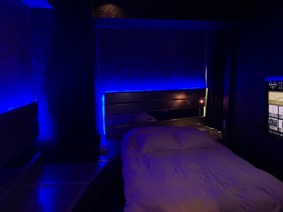
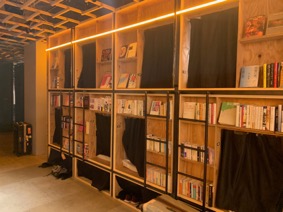
The JR Yamanote line runs in a circle, and is an easy way of getting to many places in central Tokyo.
Tickets for the Studio Ghibli museum really do sell-out immediately; a couple of hours after release they were already sold-out for our visit dates.
Sumo tickets also sell out quickly, but we got some via buysumotickets.com. We had the tickets posted to our home address, but they also deliver to hotels. Box seats are closer to the action, but are literally a small box on the ground.
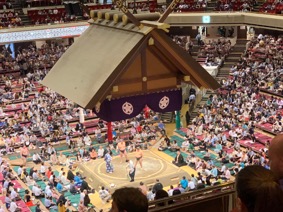
teamLab Boderless in the Tokyo Bay area was fantastic. The Gundam unicorn giant robot statue (technically a mobile suit rather than a robot according to the OH…) is nearby, and worth a look if you're remotely into that sort of thing.
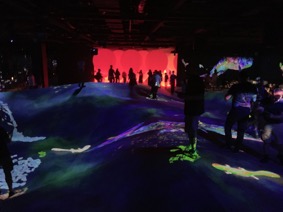
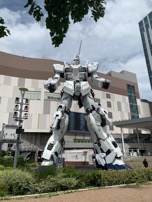
Kyoto
If you're into temples and Japanese gardens, there's plenty here to fill 3 full days. Here's what we did:
- Day 0: Higashi-Honganji (atmospheric large temple).
- Day 1 (North West): Arashiyma line train to Arashima for bamboo path & Tenryu-ji (both worth seeing, in particular the separate Cloud Dragon). Then back to Myoshinji for Myoshin-ji, walk to Ryoan-ji (over-rated Zen garden) and bus to Kinkaku-ji (golden temple), bus back to central Kyoto.
- Day 2 (South East): JR train to Inari for Fushimi Inari (more torri gates than you can shake a stick at!), subway to Tofukuji-ji (for a better Zen garden and a strolling garden) and then the National Museum (not a huge collection, but some impressive things, in particular the buddha statues). Walk to Sannenzaka and Ninenzaka and surrounding temples (very touristy).
- Day 3 (North East): bus to Ginkaku-ji temple (full of school groups), walk down Path of Philosophy, stopping at Honen-in (pleasant quiet small temple) to Eikan-do (great) and then Nanzen-ji (a little under-whelming). Train to the Railway Museum (fun). Train and subway to International Manga Museum. This was a bit disappointing. It had a huge collection of Japanese manga. but the information boards only contained minimal basic info.
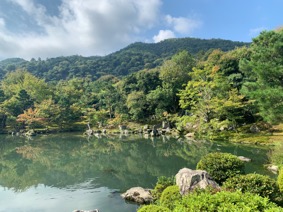
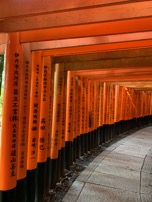

Nara
Easily done as a day side-trip from Kyoto. The highlights for us were the Todajji temple (with its giant buddha), the Kasuga Taisho shinto shine (well worth paying the extra to go inside) and feeding deer biscuits to the semi-tame wild deer (who will attempt to eat anything that looks vaguely edible).
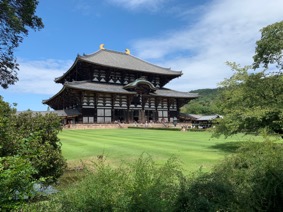
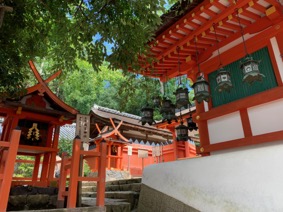
Himeji
We stopped en route from Kyoto to Hiroshima to visit the castle. It's impressive from the outside, but queuing round the bare inside is fairly mundane, if you're used to European castles. I wouldn't want to do it in peak tourist season. The nearby Kokoen gardens are pleasant.
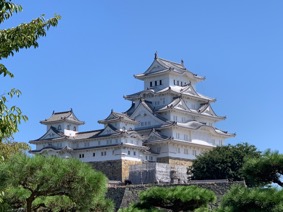
Hiroshima and Miyajima
We spent 1 night in Hoiroshima and 1 night in a ryokan (the Mijyaima Seaside Hotel) on Miyajima. In between we visited the Hiroshima Peace Memorial Museum and spent the afternoon taking the Miyajima ropeway (part-way) up Mount Misen and visiting the Itukushima shrine. Miyajima's most famous sight (the giant torii gate) is currently under renovation, but there's lots of other good stuff to see. In retrospect we'd have spent a full day there, and 2 nights at the ryokan (and stopped briefly in Hiroshima to visit the Peace Memorial Museum on the way in or out). The ryokan stay was a fantastic experience.

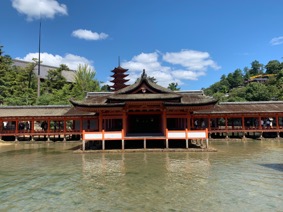
Rabbit island (Okunoshima)
A small island, former site of a poison gas factory, now inhabited by large numbers of rabbits. A bit fiddly to get to, it didn't quite live up to the YouTube videos. Probably only worthwhile for big rabbit fans.

